Review: Nokia N96
Score:
82%
Steve Litchfield starts the All About Symbian review of Nokia's new Nseries flagship, the N96. Part 2 will be a walk through its applications and unique selling points and part 3 will look in detail at the N96's multimedia capabilities.
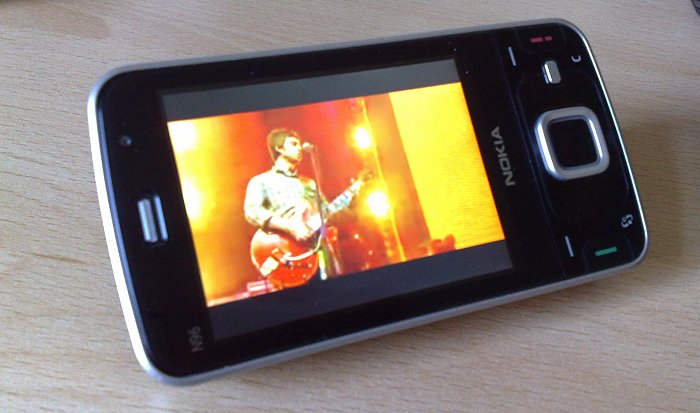
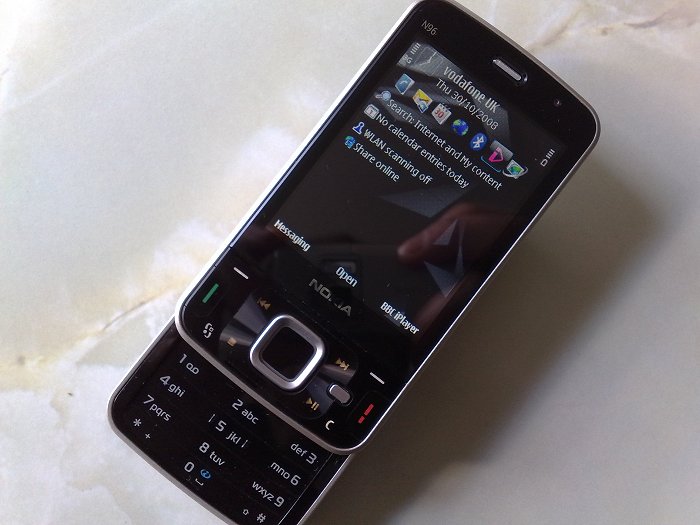
- Hardware decoders for H.264 video and digital audio streams (these are crucial to the N96's raison d'etre, meaning much better power efficiency for media playback)
- 16GB of flash memory (double that of the N95 8GB and very much needed for the amount of video files you're going to be handling)
- A microSD card slot (for adding yet more storage, up to another 32GB theoretically, taking the maximum total memory for this device to a whopping 48GB)
- Full USB 2 transfer speeds (the N95 8GB and most previous Nokia S60 devices were limited to 1MB/s, a paltry amount that prevented any serious filling up with video or music. I've clocked the N96 at 6MB/s for reading from the Mass Storage disk (E) and at about 4MB/s for writing to the Mass Storage disk, at which speed an album of WMA-format music transfers in around 12 seconds and a 200MB full length movie transfers in under a minute)
- Slimmer, at 17mm, quite noticeable in the hand (versus 20mm for the N95 8GB)
- Dual LED flash, rather than single (at least twice as bright)
- Kick-stand on the back of the device props the N96 up at a good angle for video watching while eating breakfast! This sounds like a gimmick, but is surprisingly useful. Once you've gotten used to having the stand you quickly take it for granted and it's a cute step on the N96 becoming a decent video platform.
- Built-in DVB-H digital TV receiver (though only a handful of countries transmit programmes in this way right now - Italy and Finland most prominently)
- Better positioned stereo speakers (for use in landscape/TV mode)
- Top slide keys have their own light-up gaming icons in N-Gage mode (not every game really needs them, they're a bit of an afterthought, if I'm honest)
- Dedicated music and media control keys on front of the phone (so you can use them without having to open the top slide)
- Lock/unlock key (on the top of the device - I really like this, it saved having to mess around pressing the fiddly power button or going back to the standby screen or open and close the device in order to lock the keypad)
- Software improvements include S60 3rd Edition FP2 (see our feature here on this), the BBC iPlayer client (widget), plus better connectivity routing through to RealPlayer (which is what makes BBC iPlayer work seamlessly without having to fiddle with obscure settings), and a whole new version of Video Centre that includes feeds for the likes of the BBC, ITV and Sky ('mobisode'-style content only, though).
- Bundled with 3 months navigation in Nokia Maps, plus an activation code for Tetris on N-Gage. In theory, the review N96 was also bundled with a version of the movie Transformers, but it was nowhere to be seen. (No great loss, I suspect!)
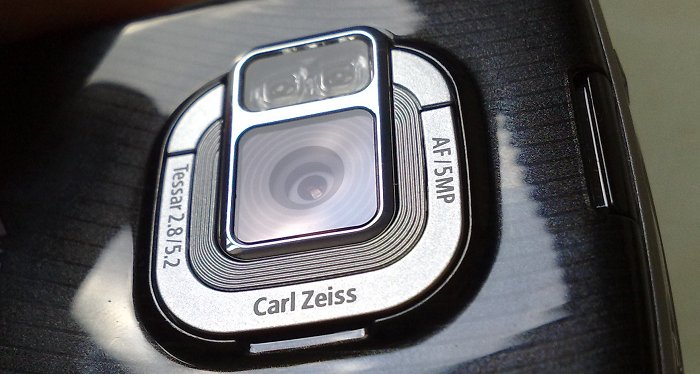
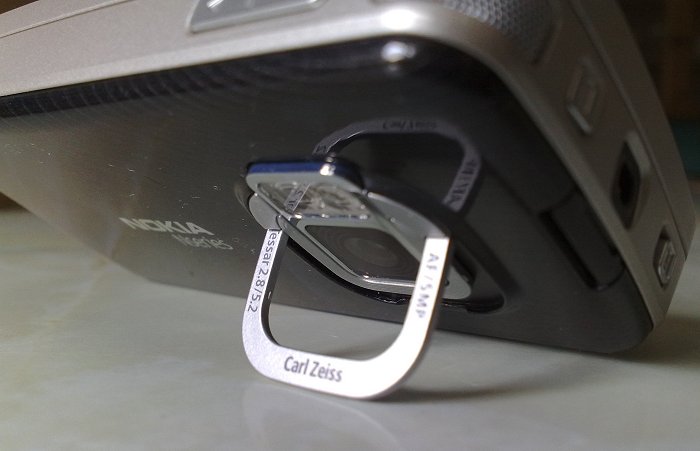
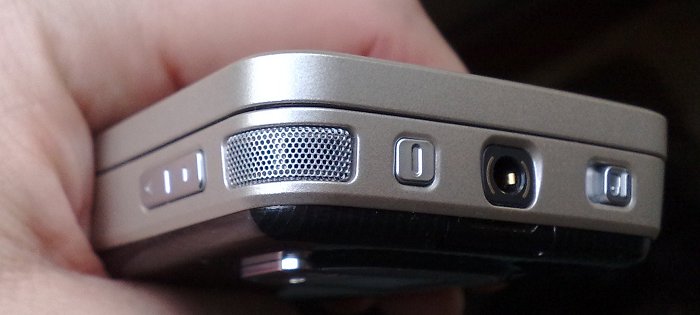
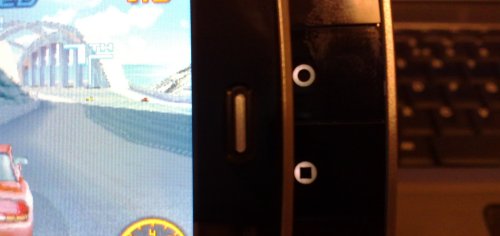
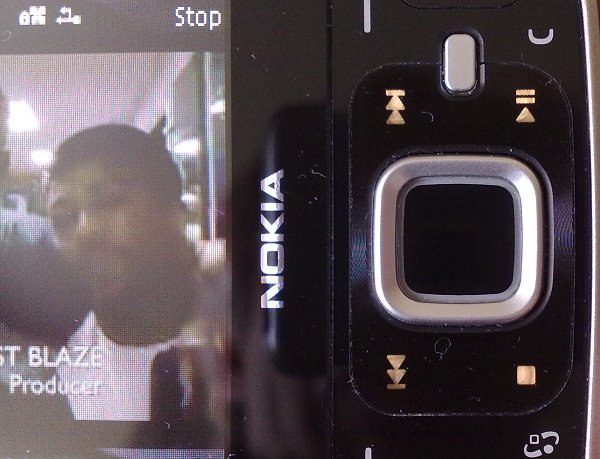
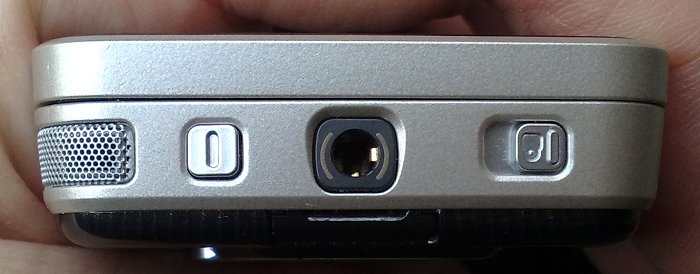
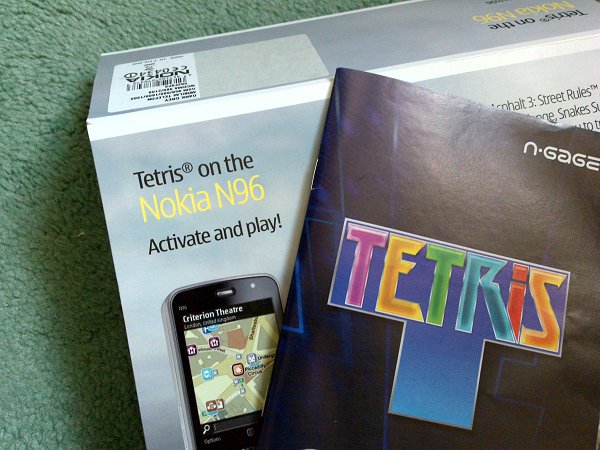
Hmmm.... that is quite a good list of improvements after all... With no downsides, maybe there is enough there to tempt an N95 8GB owner for an upgrade after all. But... and there is always a 'but'... the N96 has attracted criticism over a number of points:
- The battery is the same one as in the original N95, at 950mAh, which isn't really enough to power a device with a 2.8" screen, Wi-Fi and GPS for intensive use. The N96's hardware media decoders mean that it's more efficient when playing videos and music, without having to run the processor flat out, but there's still the screen to power and you're going to want that at max brightness for video watching. And for general Web/Talk/Email/Photography use, the N96 struggles to a similar degree to the original N95.
After all, we're talking basic Physics here and the energy to run the Wi-Fi/3G/GPS links and to operate the camera (for example) is going to be similar to that needed on the N95 units. Will the battery be a showstopper? Probably not, for many people, this isn't a phone for S60 power users, the kind who bought the N95 8GB, for example. And even new users will have to get used to charging their new N96 every night without fail.
- The front key cluster is a nice idea in principle - add more functionality to your most used part of the phone. But, as others have rightly pointed out, to have 16 separate function keys in such a small area is, to be honest a bit of a mess. OK, ok, a huge mess. The S60/Menu key is a disappointment in that it's too small and hard to hit - I'm guessing that Nokia would rather have people use the intrusive 'multimedia' key instead, but I still don't like this system. The light-up music/media-control keys are a good idea, but their implementation is immature at the moment - they're often lit up (and distracting) when there's nothing to control - I'd have expected them to only do anything when Music Player or RealPlayer was running. The good news is that this is emminently fixable in software and that Nokia are pretty hot on firmware updates to their Nseries range.
- The camera shutter key takes some getting used to - the points for focussing and taking a shot are a lot 'lower' than on any other camera-toting phone I've ever used. You almost feel like your finger is dipping inside the phone's casing in order to actually get the shot off. Not a huge problem, but certainly enough to cause most users a 'What the...' moment.
- 'Slow operation' - I have confess that, in contrast to other reviewers, I haven't found my v10 firmware N96 to be slow in general. One thing I have noticed is that the initial boot-up phase goes on for longer. I don't mean the time taken for the standby screen to first appear (32 seconds), I mean the time taken for all the OS's background processes to start and set themselves up. There's a good 30 seconds after the appearance of the standby screen in which anything you ask the phone to do will be horribly slow because the OS is still, in reality, grinding into action. Once allowed to start up fully though (a minute after pressing the power button), everything happens really fast. At least as fast as on any other S60 3rd Edition FP2 phone and often faster. It's all about understanding what's going on under the hood, as I see it. Certainly, I've been advising users for years not to turn their phone off each night, but instead to simply put it in offline or silent modes. Even more so with the OS-heavy N96. You want all those background processes to keep chugging away, doing what they do best rather than having to start from scratch every single morning.
Every so often when using the N96, little animations, slowdowns and clues can be noticed, showing that there is indeed more 'clever stuff' going on behind the scenes and undoubtedly sucking up processor power. There's not much anyone can do about this, but hopefully their impact can be reduced as the firmware evolves.
- The top row of number keys is claimed to be too close to the bottom of the top section, but I had no problems here. Maybe this only affects those with large fingers?
- 'Buggy firmware' - I've only had a couple of glitches (one each of 'System error' and an OS restart), certainly not enough to warrant issuing a 'stop' order on the sale of N96s. Maybe I've been lucky? I'm sure there are dozens of buggettes still being worked through by Nokia, but I've learned to trust them to keep working and to get it right in time... I was reviewing a v10 unit, by the way, which claimed not to have any 'over the air' or NSU updates available, curious, since v11 has been out for a while.
- Only 85MB internal flash memory (i.e. the 'C' disk). The lower amount (compared to other recent S60 phones) is a little disappointing, but perhaps understandable given the extra size of the ROM/firmware and all the extra little bits and pieces now built-in. And with 16GB only a single disk away, and with microSD expansion beyond that, I don't think it will cause a problem.
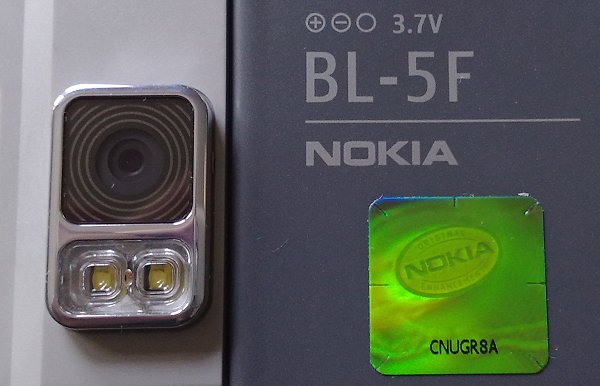
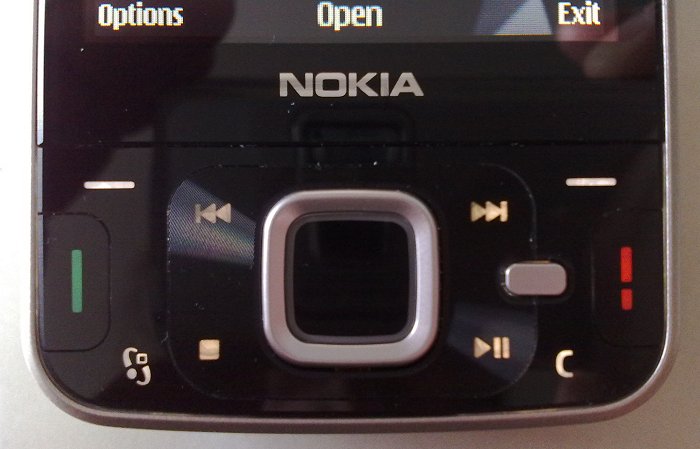
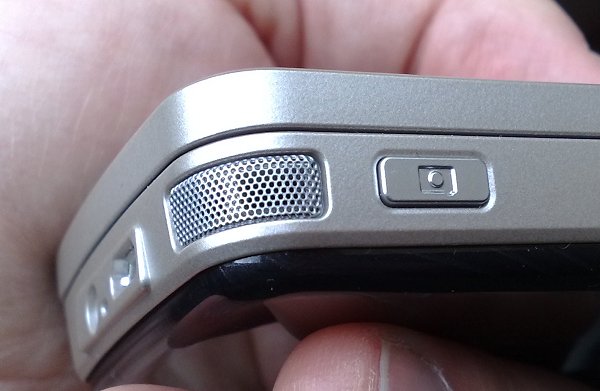
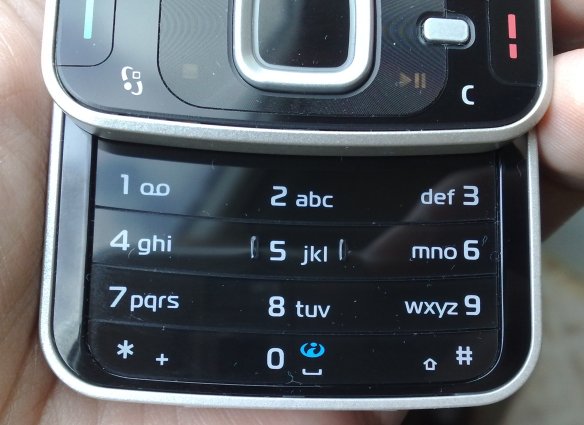
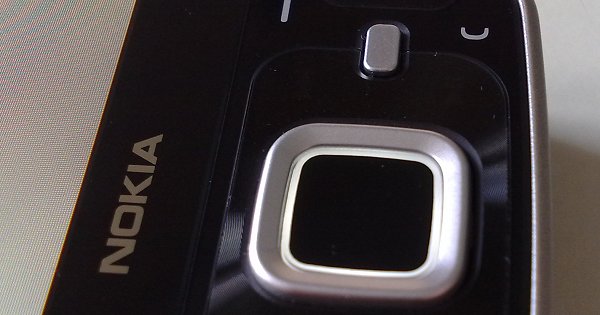
One other factor I've noticed on the performance front is that there's only around 46MB free RAM after booting. Although power users might still hit the limit when attempting to view really heavy web pages, this is still a decent amount for normal operation (c.f. the N95 Classic, even with latest firmware, only has about 30MB free) and I'd expect the figure to rise to well over 50MB free after a firmware update or two. The lower free RAM is again evidence for more of the OS loading 'behind the scenes', ready for faster operation when you need it.
Behind the mammoth marketing campaign by Nokia and its network partners (every TV station, every billboard, every bus stop poster), mainly gunning at the mobile TV aspects of the device (despite the fact that there's no DVB-H coverage in most countries yet) and occasionally at the navigation possibilities, there is of course a 'standard' S60 3rd Edition FP2 smartphone on offer here. The screen's identical to the one in the N95 8GB, the camera's identical to that in the likes of the N85 and N95 (the latter with only single LED flash), the GPS hasn't changed for over a year, ditto Wi-Fi and 3.5G receivers.
Most of the interface will be very familiar to all here. Photos and Video Centre officially replace 'Images' and 'Video' in the usual Gallery categories and do a generally comprehensive job. Video Centre in particular is now a lot more mature, has been massively overhauled specifically for the N96 and the various links and directories 'go' somewhere useful. Programmes downloaded from BBC iPlayer appear in Video Centre and can be played in the usual way, with the added bonus that there's a 'Continue watching from where it stopped' feature which is terrifically useful when you're working your way through a downloaded hour long documentary, a bit at a time, during your working day. iPlayer videos are around 100MB per hour, by the way. Which seems a lot (and partly explains why the BBC is pushing so hard to get people to only use iPlayer on a Wi-Fi connection) but with 16GB to spare internally you'll be doing well to have many space problems.
iPlayer works best in 'Download' mode, with the actual grabbing of programmes done over Wi-Fi, at home or in the office, when also connected to a mains charger, and then you can watch to your heart's content, with no requirement for continuous 3G or Wi-Fi data coverage and able to run efficiently on battery power alone.
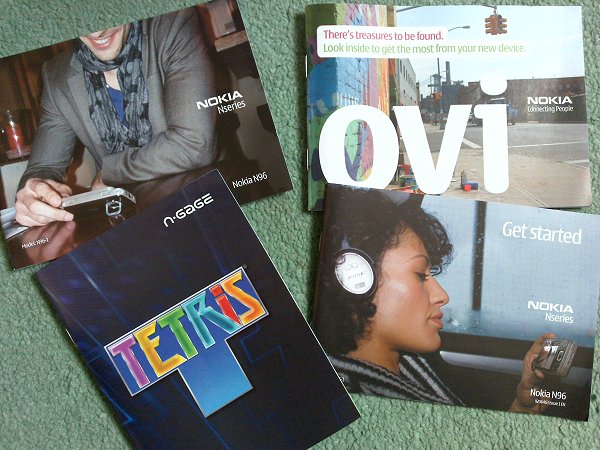
Plenty of reading for new N96 owners! No less than four books/booklets to pore over. Note the Ovi guide!
It should be evident from all the above that the Nokia N96 can, after all, stand on its own at the top of Nokia's range without feeling too embarrassed. Sure, it's imperfect, but which device isn't? I am a little surprised that Nokia didn't go further though. They could have knocked the ball out of the park by:
- Using a VGA screen instead of QVGA - the difference isn't huge for most people's eyesight, but this is supposed to be the flagship and I think it deserved a flagship's screen.
- Using Xenon flash rather than dual LED. Yes, the latter is useful for night time video recordings, but these are of quite low quality and generally unwatchable, whereas Xenon makes such an enormous difference for low light or night still photos.
It's important not to underestimate the role firmware updates have in any evaluation of the Nokia N96. The N95 classic had five major updates during its lifetime (spanning a year and a half), taking it from underperforming disappointment to superlative smartphone. The N95 8GB had four (spanning a year), going from glitchy star to genuine flagship. The N96, despite running the newer S60 3rd Edition Feature Pack 2, starts from an arguably more mature codebase and even v10 firmware here feels like v12 or even v20 on the N95 or v20 on the N95 8GB. I'd estimate that the N96 will be fully mature by Feburary/March next year, a much quicker pace of maturity than with its predecessors. And, unlike with the N95 range, owners can, in theory, update their firmware without loss of data or having to jump through backup/reinstallation hoops. The result is a far more optimistic future.
With my unashamedly UK-centric hat on, there are questions I'd love to ask the N96 product management team though. One of these is: would the N96 have been released at all if it hadn't been for BBC iPlayer? Yes, iPlayer, which has only been around for a number of months, can be hacked to work in Wi-Fi streaming mode on the likes of the N95, but it's fiddly. I'm guessing that Nokia's N96 team actively worked with the BBC's boffins to make absolutely sure that N96 owners got access to iPlayer with no hassle, adjusting the way RealPlayer on the N96 acquires its Internet connection and resurrecting the OMA DRM system for this device only, to handle time-locked downloaded programmes.
I referred to the Nokia N95 8GB for ages as 'the most densely packed few cubic centimetres of technology I could think of' - the thing just did so many different things. Well, the N96 goes one better in that it adds another thing. TV. Being able to browse through BBC iPlayer, pick out the programmes that I completely forgot to watch or to record, download them in the background at home over Wi-Fi and then watch them in odd moments while travelling, hanging around at school pick up time, making tea, etc. in a seamless, comfortable experience, is terrific. If iPlayer hadn't existed (and for N96 buyers in many other non-UK and non-DVB-H countries that is, of course, a reality) then the N96 is just an improved version of the N95 8GB but nothing to really get excited about. With TV-on-demand on-board, we've got a whole new ballgame and, in the UK, the N96 is worth me giving it quite a bit more attention.
In part 2 of this review, I'll be walking through some of the applications involved in the unique selling points of the N96....
Steve Litchfield, 2 Nov 2008
Reviewed by Steve Litchfield at
